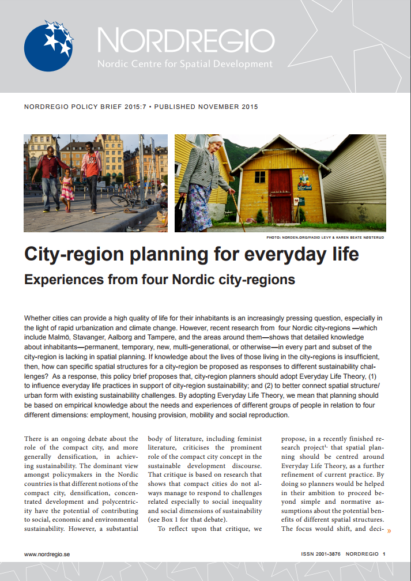Whether cities can provide a high quality of life for their inhabitants is an increasingly pressing question, especially in the light of rapid urbanization and climate change.
However, recent research from four Nordic city-regions —which include Malmö, Stavanger, Aalborg and Tampere, and the areas around them—shows that detailed knowledge about inhabitants—permanent, temporary, new, multi-generational, or otherwise—in every part and subset of the city-region is lacking in spatial planning. If knowledge about the lives of those living in the city-regions is insufficient, then, how can specific spatial structures for a city-region be proposed as responses to different sustainability challenges?
As a response, this policy brief proposes that, city-region planners should adopt Everyday Life Theory, (1) to influence everyday life practices in support of city-region sustainability; and (2) to better connect spatial structure/ urban form with existing sustainability challenges. By adopting Everyday Life Theory, we mean that planning should be based on empirical knowledge about the needs and experiences of different groups of people in relation to four different dimensions: employment, housing provision, mobility and social reproduction.







